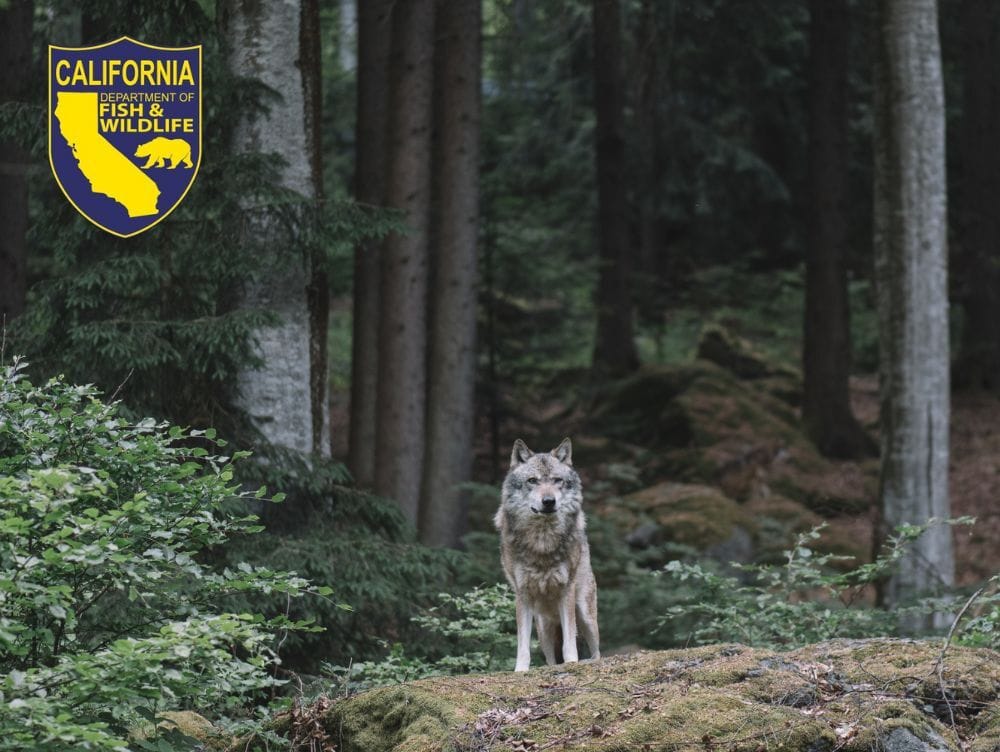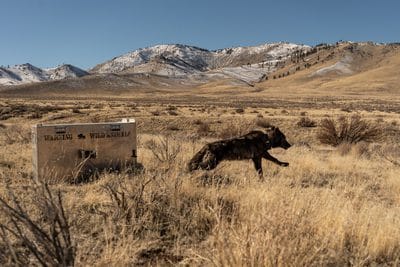
For the first time in over a century, California wildlife officials have killed gray wolves on state soil. In late October, the California Department of Fish and Wildlife announced the lethal removal of four wolves from the Beyem Seyo pack in Sierra Valley, Plumas County, after the animals were linked to 70 confirmed livestock depredations in just six months, more than half of all wolf-related cattle losses statewide.
The decision, made in coordination with the U.S. Fish and Wildlife Service, marks a turning point in California’s wolf recovery story and has ignited fierce debate over coexistence, timing, and the limits of non-lethal deterrence.
As victims of widespread extermination, gray wolves vanished from California by 1924. Their natural return began 87 years later in 2011 when a lone wolf from Oregon made his way across the border. Today, officials believe that between 50 to 70 wolves call California home, distributed across ten confirmed packs, with most residing in the remote northeast.
The Beyem Seyo pack, named in the Northern Paiute language for “wolf country,” formed in Sierra Valley in early 2024. What started as occasional cattle kills escalated into a relentless nightly campaign that included 87 head of cattle confirmed or probable dead by mid-October 2025.

A collared wolf from the Beyem Seyo pack | CDFW
“This pack became completely habituated to livestock as a primary food source,” said CDFW Director Charlton H. Bonham. “That behavior is rare, dangerous, and, if passed to pups, could undermine the entire recovery effort.”
From June to September 2025, CDFW deployed a summer strike team of biologists, technicians, and veterinarians, totaling over 18,000 staff hours across 114 days. The team used every tool in the non-lethal playbook: hazing with bean-bag rounds, paintball guns, sirens, and starter pistols; miles of fladry and electrified barriers; drones, ATVs, and 24/7 trail cameras; and supplemental feeding stations to lure wolves away from cattle.
The effort prevented an estimated 95 additional kills and assisted 18 local ranches, yet the wolves adapted. They learned to avoid hazing, cut through fladry, and returned within hours.
“These wolves weren’t acting like any wolf I’ve ever seen,” said Sierra County rancher Paul Roen. “They’d come right down into the valley, bold as brass.”
By early October, the pack of three adults and six juveniles showed no signs of breaking the cycle. With federal approval under the Endangered Species Act, CDFW authorized lethal removal for conservation purposes.
Between October 10 and 14, four wolves were captured using tranquilizer darts and euthanized via veterinary injection. The group included the breeding male WHA08M, the breeding female LAS23F, the adult female BEY01F, and the juvenile male BEY12M, who was mistaken for an adult due to his size. Two other pups were later found dead from natural causes, which officials say is common in wolf litters. Three surviving male juveniles, now orphaned, are the focus of an ongoing capture-and-relocate operation using drones, helicopters, and baited traps. If caught, they will be placed in a sanctuary like the California Wolf Center to prevent the learned behavior from spreading.

Confirmed wolf kill | CDFW
Ranchers in Plumas, Lassen, Modoc, Sierra, and Shasta counties, many of whom have declared local emergencies, expressed relief but also frustration.
“It was simply too late,” said Wendy Flick, a local cattle producer. “Non-lethal efforts didn’t start until June 2025, but the wolves were killing since January 2024. By then, the damage, and the habit, was done.”
CDFW’s Wolf-Livestock Compensation Program has paid out claims for verified losses, up to $3,000 per head, totaling an estimated $260,000 for the Beyem Seyo incidents alone. But ranchers say money doesn’t replace traumatized herds, lost genetics, or the constant stress of nightly patrols.
Conservationists, while mourning the loss, largely support the decision. “This wasn’t punishment, it was surgery,” said one wildlife biologist anonymously. “Remove the cancer to save the patient.”
CDFW is now reviewing protocols, earlier intervention, expanded strike teams, and better coordination with ranchers, to prevent future escalations. The agency also plans public workshops on coexistence tools, from range riders to guard dogs.
“Several things can be true simultaneously,” Director Bonham continued. “Wolves are here in California and that is an amazing ecological return. Yet, their reemergence is a significant, disruptive change for rural communities. Wolves are one of the state’s most iconic species and coexistence is our collective future but that comes with tremendous responsibility and sometimes hard decisions. The Beyem Seyo pack became so reliant on cattle at an unprecedented level, and we could not break the cycle, which ultimately is not good for the long-term recovery of wolves or for people.”

